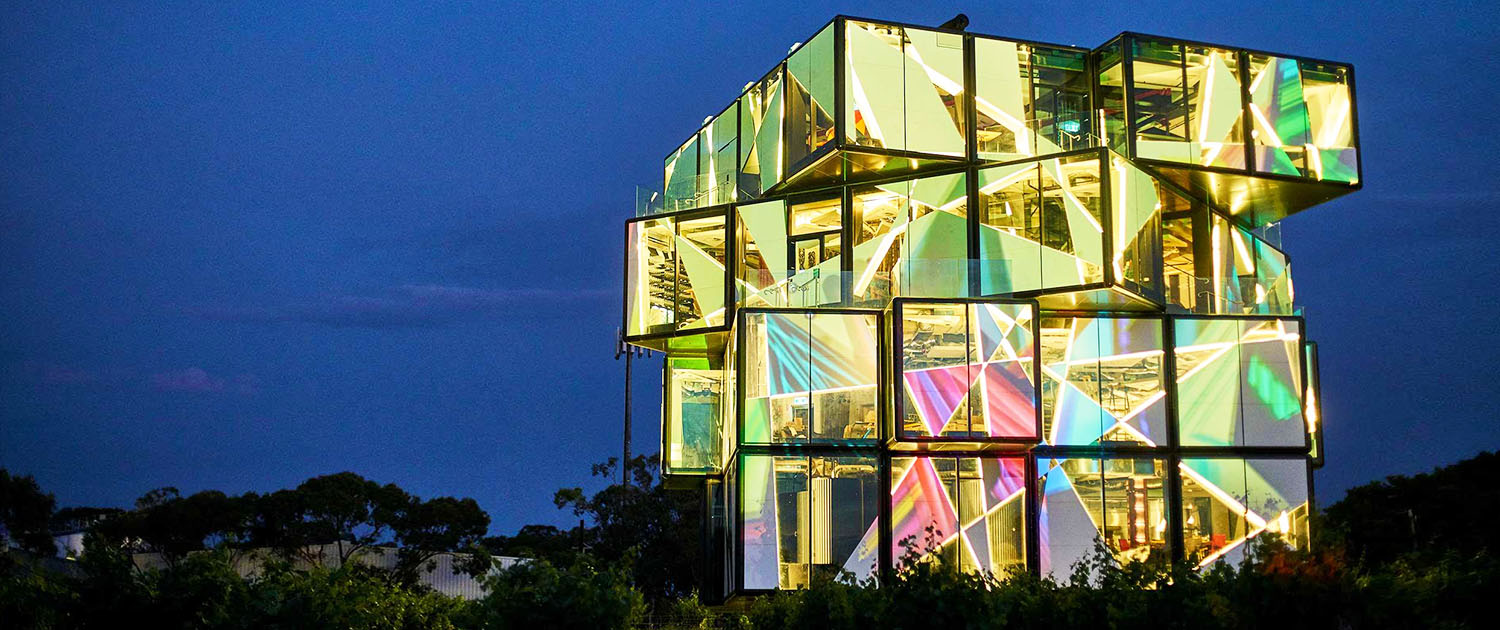Given that d’Arenberg produces 72 different wines under 60 labels there are plenty of aromas to choose from.
Chester Osborn, 55, who says he likes to paint and sculpt when he’s not fully occupied as chief winemaker and futurist for the company his great grandfather Joseph Osborn founded 105 years ago, has filled any vacant space with art pieces and installations he’s either commissioned or collected over the years.
There’s a lift to the upper floors but far more entertaining is the completely mirrored stairwell featuring caricatures of d’Arenberg’s range of wines by Australian cartoonists. The second floor is a multi-function space for tastings and blending classes, while the third floor houses the d’Arenberg Cube restaurant.
This is not the place for a casual snack. With South African husband and wife team Brendan Wessels and Lindsay Dürr, above, in charge of the kitchen the menu options include a “long” degustation lunch, the Sisypheanic Euphoria (allow up to three hours) and an “extra long” lunch, the Pickwickian Brobdingnagian (allow at least four hours). It will be quite an experience, from the dining chairs that explode with colour and tables crafted from old oak barrels, to a 3D food printer in the kitchen.
The top floor is an all glass tasting room – four glass bars made up of 115 televisions featuring opaque projections of a naked female underwater swimmer, floor to ceiling windows on all sides – even a glass ceiling, with 16 two-tonne glass panels topped with 16 massive umbrellas that automatically retract and fold in a gale.
Among the many hundreds of installations and artistic creations filling the Cube, only once did Chester’s vivid imagination beat the available technology. At the entrance, a sharp left turn was to lead to a small “wine fog room”, a vinous sensory overload with the visitor immersed in a thick fog of whatever happens to be the wine of the day: breathe it, feel it, wear it.
It will happen, but only when they’ve worked out how to prevent the wine fog from setting off the fire alarms.
The d’Arenberg Cube opened to the public on December 14. The cellar door is open daily 10am – 5pm.






